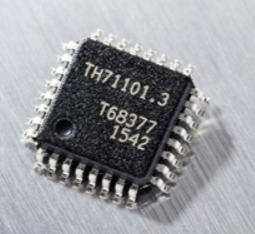UNIT 7
Superhetrodyne Receivers

The signal is received by the RF amplifier which is a wideband class A amplifier whose resonant frequency response curve can be tuned from 540 kHz to 1650 kHz .
The modulated signal is amplified and fed to the mixer stage which is a class C circuit capable of producing the sum, difference, and original frequencies, and which receives signals from two sources namely the RF amplifier and the local oscillator.
The unmodulated signal from the local oscillator is further fed to the mixer where simultaneously it is mixed with the modulated signal received from the RF amplifier.
The local oscillator (LO) is a tunable circuit with a tuning range that extends from 995 kHz to 2105 kHz.
The output from the mixer circuit is then connected to the intermediate frequency amplifier (IF amp) which amplifies a narrow band of select frequencies (455 kHz± 3 kHz).
In some receivers this class A circuit acts not only as an amplifier but also as a filter for unwanted frequencies which would interfere with the selected one.
This new frequency contains the same modulated information as that transmitted from the source but at a frequency range lower than the standard broadcast band.
This process helps to reduce the unwanted interference from outside sources.
The signal is further rectified and filtered to eliminate one sideband and is finally amplified for listening.
An intermediate frequency is present between the baseband frequency and the carrier frequency. IF circuitry can be incorporated for both transmitters and receivers, but the benefits of IF techniques are more relevant to receivers.
Advantages:
It has the ability to design a receiver in which more of the circuitry can be designed for one unchanging frequency band.
It minimizes high frequency processing.
It has lower Q.
- The RF and local oscillator tuning capacitors are mechanically coupled on the same shaft and have the same capacitance/rotation law.
- As the shaft is rotated both circuits vary in frequency.
- When the local oscillator is set such that its difference from the signal frequency is equal to IF then any mis-tuning results in a loss of signal strength, an increase in adjacent channel interference and possibly between-channel cross-modulation.
- The tuning capacitor can be swept over the frequency band for error checks.

- RF mis-tuning is described as an 'error' and is measured in kHz. It is measured as a fraction of the wanted signal frequency. If the fractional error exceeds approximately 1/Q of the RF tuned circuit then best use of RF signal circuit selectivity is not being made.
- Within a particular waveband there are three frequencies of zero-error. Optimum performance is obtained when the errors at the four frequencies of greatest error all have similar magnitudes.
To mitigate the effects of the image spectrum, heterodyne receivers use image-reject filters. They are placed before the mixer and the image spectrum is suppressed before the mixer shifts it to the intermediate frequency. This is an effective solution, but there are two complications.
Trade offs
If we increase the intermediate frequency too much, the difficulties created by the higher IF may outweigh the benefits of improved image rejection. Thus, image-rejection filtering entails a fundamental trade-off between image suppression and the desire to maintain a lower intermediate frequency.
Integration
Image rejection is typically accomplished by means of a filter that is not incorporated into an integrated circuit. In other words, image-reject filters consume PCB area and design time, and in the context of modern electronics, both of these resources are valuable and in short supply.

References:
- Communication system by Bruce carison . TMH.
- Electronic Communication system by Kennedy IV Edition. TMH.
- Electronic Communication system by Roddey & Coolen, Pearson.
- Telecommunication system Engg. By Freeman John Wiley
- Communication system by Haykin,Wiley